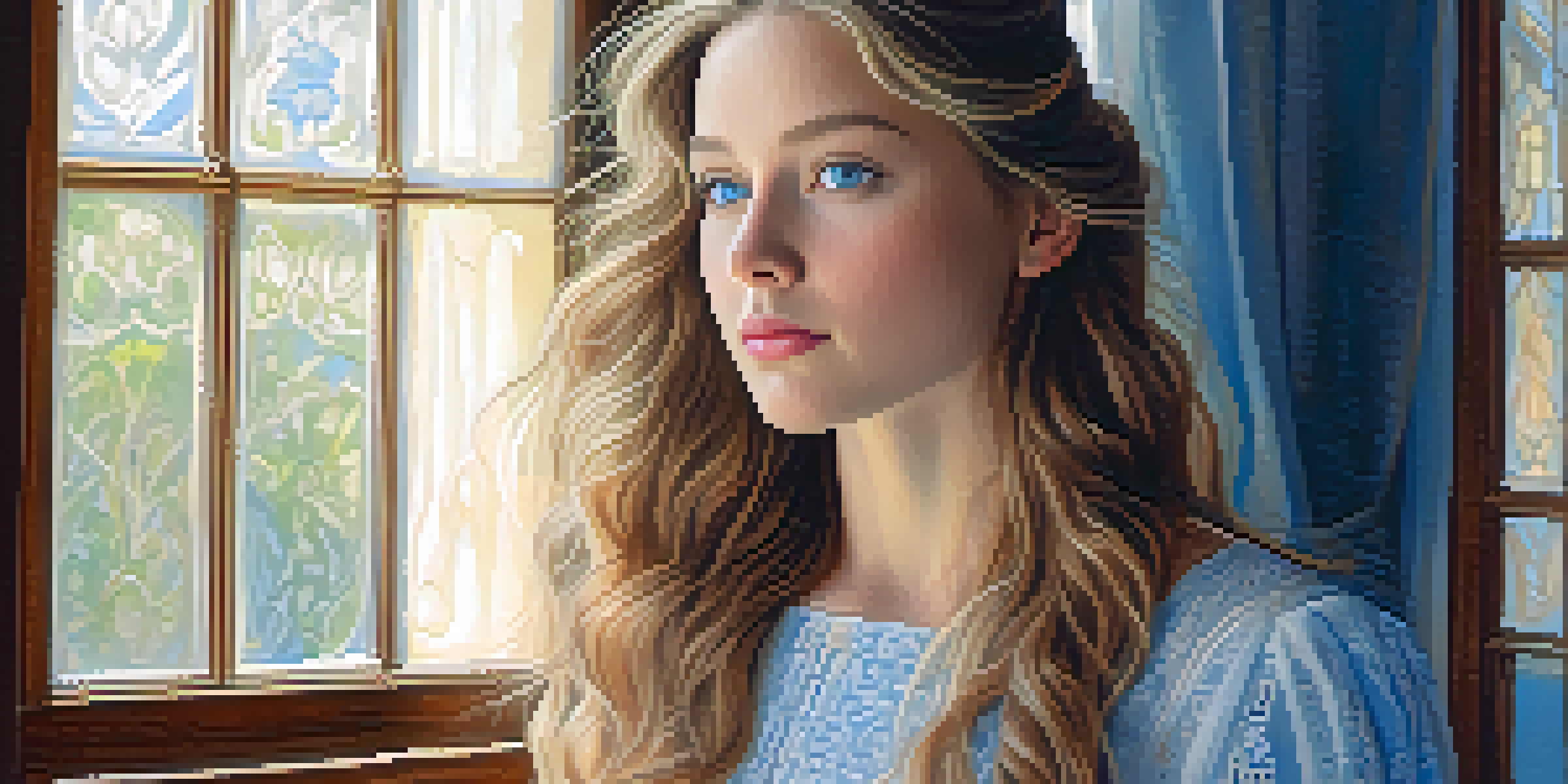Portrait Painting Techniques: From Oil to Digital Art Forms

Understanding the Basics of Portrait Painting
Portrait painting is a fascinating art form that captures the essence of a person's character and emotions. It often involves a careful study of facial features, expressions, and body language. The goal is to create a likeness of the subject while conveying mood and personality. Understanding the fundamentals can help both novice and experienced artists hone their skills effectively.
Traditional Oil Painting Techniques for Portraits
Oil painting has been a favored medium for portrait artists for centuries, thanks to its rich colors and versatility. Techniques such as glazing, where thin layers of paint are applied to achieve depth, can bring a portrait to life. Additionally, scumbling, which involves applying a lighter color over a darker base, adds texture and luminosity. Mastering these techniques can significantly enhance the quality of your portraits.
Exploring Various Painting Mediums
Different mediums like oil, acrylic, watercolor, and pastels offer unique techniques and effects for portrait artists.
Acrylics: Fast-Drying Alternatives for Portraits
Acrylic paints offer a quicker alternative to oils, making them popular among artists who want to work efficiently. Their fast-drying properties allow for layering and corrections without long waits. Techniques like wet-on-wet can create soft edges, while dry brushing can give a textured look. Understanding how to manipulate acrylics can lead to stunning and vibrant portraits.
Watercolor Techniques for Lively Portraits
Watercolor painting can produce delicate and ethereal portraits, capturing light and fluidity. Techniques such as wet-on-dry create crisp lines, while wet-on-wet achieves soft blends that evoke emotion. The transparency of watercolors allows for layering, which can build depth and complexity in portraits. Experimenting with this medium can yield unique and captivating results.
Traditional vs. Digital Art
Both traditional and digital portrait techniques have distinct advantages, allowing artists to choose based on their creative preferences.
Exploring Pastel Techniques for Portraits
Pastels are another exciting medium for portrait painting, known for their vibrant colors and soft textures. Techniques like blending can create smooth transitions between shades, while layering can intensify color depth. Artists often use fixatives to preserve their work, ensuring longevity. Learning how to manipulate pastels can add a fresh dimension to portrait artistry.
Digital Art: A Modern Approach to Portraiting
Digital art has revolutionized portrait painting, offering endless possibilities with tools like graphic tablets and software. Techniques such as layering and digital brushes allow artists to experiment without the constraints of traditional media. Moreover, the ability to easily undo or modify elements creates a forgiving environment for creativity. Embracing digital tools can expand an artist's capabilities and reach.
Essential Tips for Portrait Artists
Key practices such as regular practice, studying anatomy, and seeking feedback can significantly enhance an aspiring portrait artist's skills.
Comparing Traditional and Digital Techniques
While traditional and digital techniques differ, both can achieve stunning portrait results. Traditional methods often focus on texture and depth, providing a tactile experience. In contrast, digital techniques emphasize precision and flexibility, allowing for rapid experimentation. Understanding the strengths and limitations of each approach can help artists choose the right medium for their vision.
Tips for Aspiring Portrait Artists
Whether you prefer oils, acrylics, or digital tools, there are key tips that can elevate your portrait painting. Regular practice, studying anatomy, and observing light and shadow will improve your skills. Seeking feedback from peers or mentors can provide valuable insights. Remember, every artist's journey is unique, so embrace your style and enjoy the process of creating.